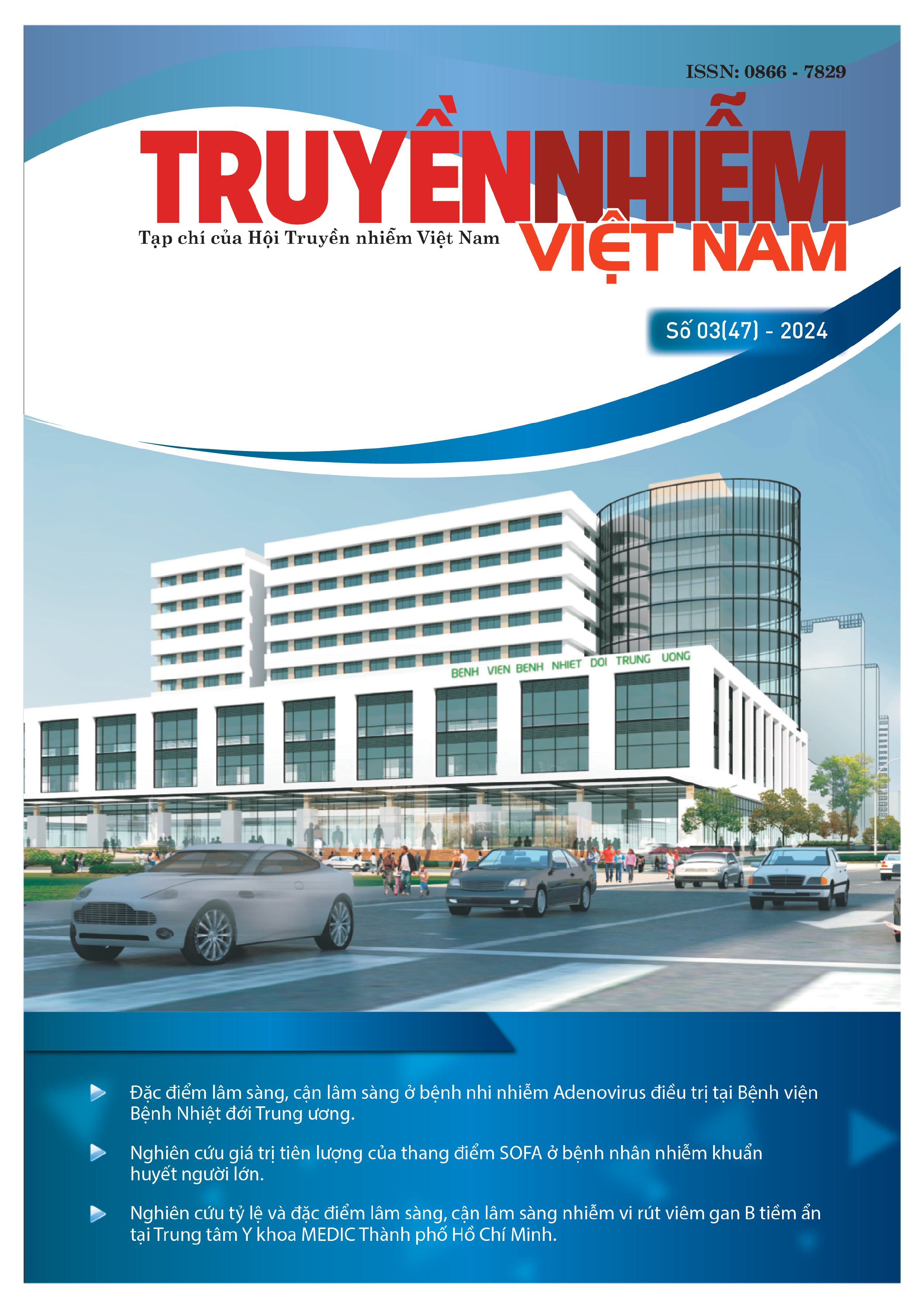CLINICAL MANIFESTATIONS, LABORATORY RESULTS AND RESULTS OF TREATMENT OF PREGNANT WOMEN WITH SEVERE AND CRITICAL COVID 19 AT THE NATIONAL HOSPITAL FOR TROPICAL DISEASES
Main Article Content
Abstract
Objectives: To describe the clinical characteristics and clinical weight of pregnant patients with severe and critical COVID-19 at the National Hospital of Tropical Diseases and the treatment results of the above subjects.
Subjects and methods: Descriptive study of 113 pregnant women diagnosed with COVID-19 severity and risk at the National Hospital of Tropical Diseases from January 2020 to June 2022.
Results: The average age of pregnant women at admission was 30.8 ± 5.7 years and the average gestational age at admission was 29.5 ± 4.7weeks . Common clinical symptoms of pregnant women are
difficulty breathing ( 100%), cough (77.9%), and fever (80.5%). Paraclinical characteristics of pregnant women: The majority of pregnant women have a normal white count ( 73.5%), 94.5% of pregnant women show increased CRP, of which CRP > 100 mg/L , less than 21, 1%. Pro calcitonin is mainly in the range of 0.05 - 0.5 ng/mL, accounting for 63.8%. The number of fetuses showing signs of increased LDH and increased ferritin and increased fertility were 53.6% and 10.2%. Most pregnant women have increased IL-6, accounting for 77.8%. Treatment results of pregnant women: mortality rate is 5.3% among severe and critical illnesses. Pregnancy results: 60.2% of pregnant women had miscarriages , of which most gave birth
by cesarean section, accounting for 97%. The reason for the termination of pregnancy was mainly due to her mother's worsening respiratory failure.
Conclusions: Severely ill and critically ill pregnant women in the study showed increased coagulation and inflammatory responses. Mortality in the study group was low, and more than half of the pregnancies
ended in termination.
Article Details
Keywords
COVID-19, pregnant women
References
2. Pierce-Williams RAM, Burd J, Felder L et al. Clinical course of severe and critical coronavirus disease 2019 in hospitalized pregnancies: a United States cohort study. American journal of obstetrics & gynecology MFM. 2020; 2(3): 100134.
3. Tutiya C, Mello F, Chaccur G et al. Risk factors for severe and critical COVID-19 in pregnant women in a single center in Brazil. The Journal of Maternal-Fetal & Neonatal Medicine. 2022; 35(25): 5389-5392.
4. Barbosa RN, Braga MA, Costa BB et al. Treatment of pregnant and early postpartum women with severe and critical COVID-19: experience at a tertiary center. European Journal of Medical Research. 2022; 27(1): 269.
5. Limaye MA, Roman AS, Trostle ME et al. Predictors of severe and critical disease in pregnant women with SARS-CoV-2. The Journal of Maternal-Fetal & Neonatal Medicine. 2022; 35(25): 7536-7540.
6. Péju E, Belicard F, Silva S et al. Management and outcomes of pregnant women admitted to intensive care unit for severe pneumonia related to SARS-CoV-2 infection: the multicenter and international COVIDPREG study. Intensive Care Medicine. 2022; 48(9): 1185-1196.
7. Khoiwal K, Ravi AK, Mittal A et al. Maternal-Fetal Characteristics of Pregnant Women With Severe COVID Disease and Maternal-Neonatal Characteristics of Neonates With Early-Onset SARS-CoV-2 Infection: A Prospective Data Analysis. Cureus. 2022; 14(8).
8. Faraz S, Aftab N, Ammar A et al. an insight on the maternal-fetal outcomes of critically ill pregnant women during the second wave of COVID-19. Cureus. 2022; 14(1)


